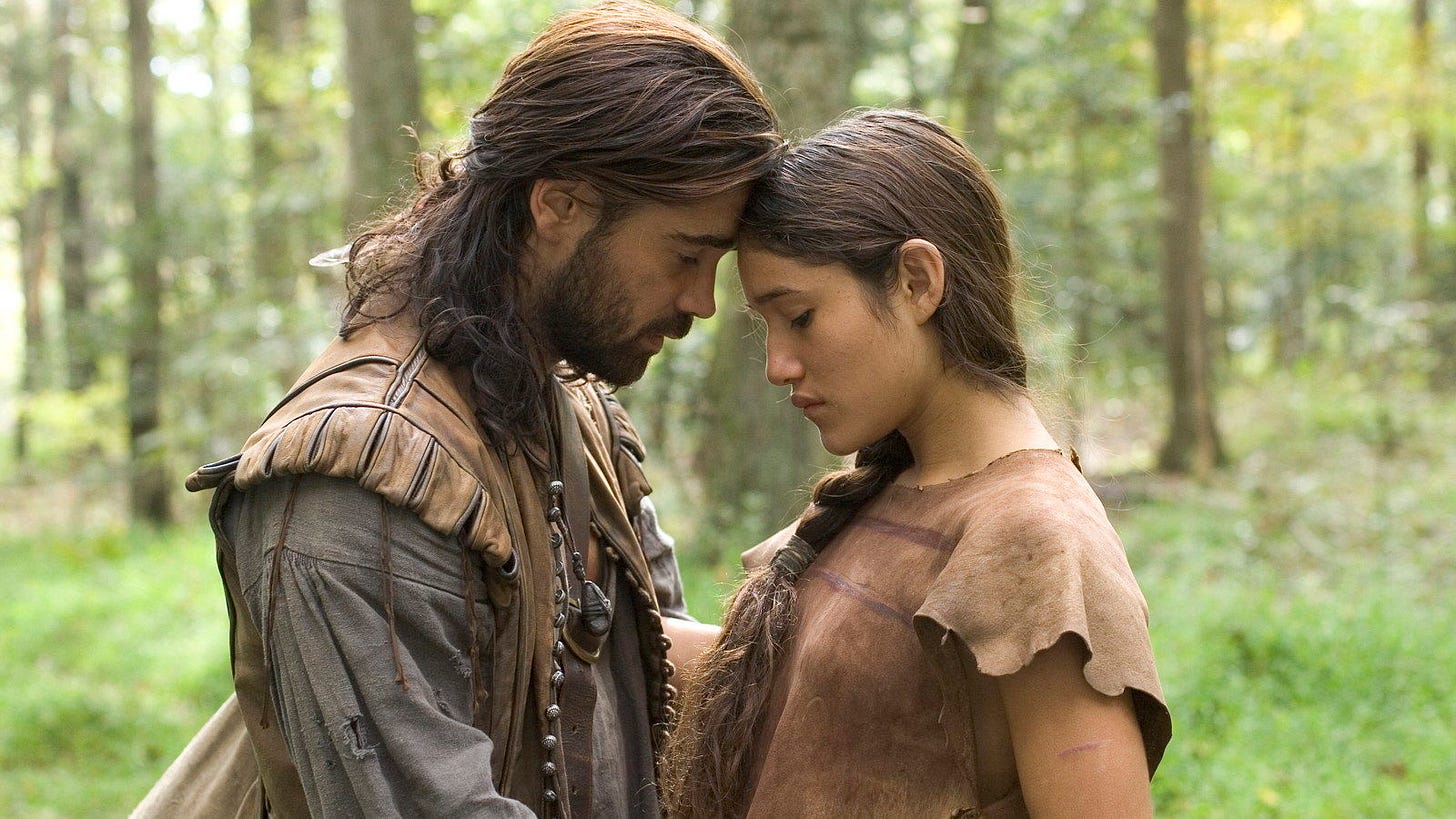Last year everything was Barbie. Anatomy of a Fall was Barbie. Poor Things was Barbie. May December was kind of Barbie.
And this year I’m afraid everything I watch will be Challengers. It’s already happening. I finally got around to seeing the last remaining Malick film on my list, The New World, which I am happy to say is, in the dumbest sense, Colonial Challengers.
Okay it’s not. It’s awesome, in the literal way it evokes awe.
—
If there is one director capable of capturing the sublime moment of discovery, it’s Malick. It’s how the The New World opens, with John Smith and co. gazing at the land before them, at what would soon be the sad project that is Jamestown. We may know the history, but Malick is more into—as he always is—documenting the almost religious experience of revelation.
Captain John Smith had been sentenced to death for inspiring mutiny, but as the men first touch down onto land, he is pardoned. Malick gives us a spirited sequence of the Englishmen’s first encounter with the local Native Americans. They almost dance around one another, and the line between playful curiosity and potential aggression is thin. As the English fail to erect Jamestown—it’s swiftly plagued by disease, supply shortages, lack of leadership—a desperate Captain John Smith moves further inland where he is captured by the natives and and brought to Chief Powhatan. He will be executed, the chief decides, until Pocahontas asks for him to be spared.
What ensues is the expected cultural clashing. John Smith softens to the natives way of life, and—in classic Malickian narration—is able admire their world, where no one feels ownership over land, where no one experiences jealousy. And with Pocahontas, who takes on an almost spritely appearance, at his side, Captain Smith is humbled by his new world. That is, until he’s back at Jamestown, put in charge, and is forced to grapple with the failed community. Malick doesn’t shy away from the decrepit colony, which looks like an abandoned set piece. It’s all very visceral, and despite our own knowledge of events, he weaves in and out of the colony like a documentarian would, as if he were capturing this upsetting scene for the first time.
Eventually, the colonists get help from Pocahontas, but when Powhatan learns they don’t plan on leaving, he declares war. Malick, obviously a master at the battle scene, shoots this with a frank naturalism. There are many casualties on both sides. The Englishmen may have guns, but the natives are quicker, have more numbers and supplies. It’s genuinely upsetting, all the more so when Pocahontas is disowned by her father and exiled for choosing the colonists over her own people. And it is her journey that Malick’s camera fixates on for the rest of the film.
—
I won’t continue my play by play of it all. Captain John Smith chooses to return to England for a promotion. A depressed Pocahontas is left walking through the ghost town that is Jamestown thinking her lover—who she sacrificed everything for—has died. And then she’s taken in by John Rolfe, another colonist who had lost his wife and child. A romance develops between the two, they marry, and the movie’s final chapter shifts to England, where the King and Queen demand Pocahontas’s presence. Here, we once again return to discovery.
Pocahontas is overwhelmed at all she sees before her. Cobblestone streets, buildings, hordes of beggars, and Malick really makes spectacle of her wonder. This is her New World, and even as she’s presented to the royal court to be objectified, Malick never shrinks away from the bigness of it all. Simply put, a lot of new things are happening. A lot of new world’s collide.
Her final meeting be with John Smith is stunning, and Challengers jokes aside, there is no rivalry. Only more discovery on Pocahontas’s part. And Malick makes sure we understand that it’s too bad she isn’t given the opportunity to see more when she dies an unexpected death.
—
I wish I had been able to see this on a big screen. I wish I could have double featured it with Tree of Life, another epic about all that is unknown and beautiful before us. But even at home, I don’t know how Malick does it. How he takes something so familiar, something that’s been made into a god damn Disney movie, and makes something straightforward but transcendent.




